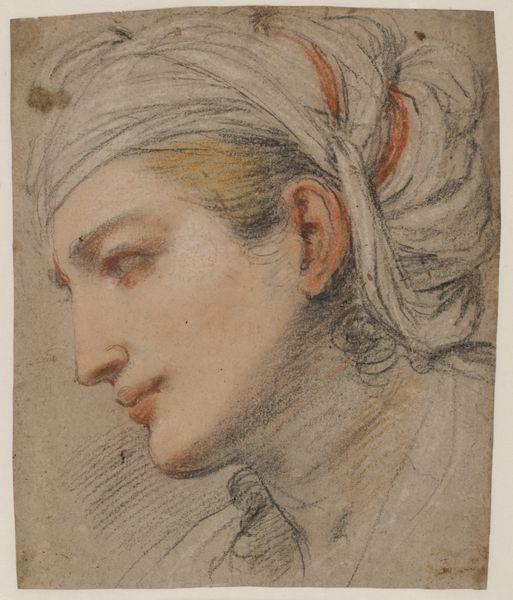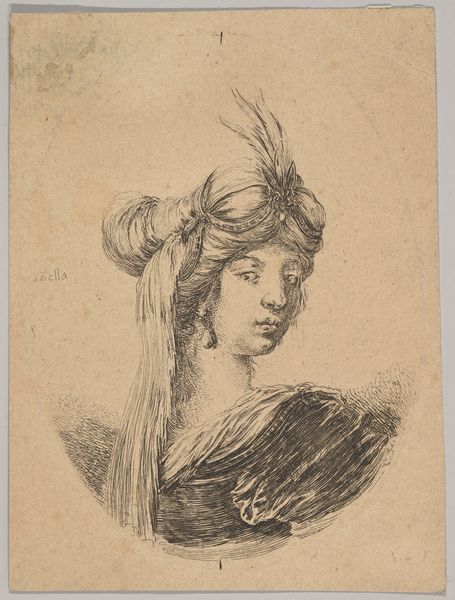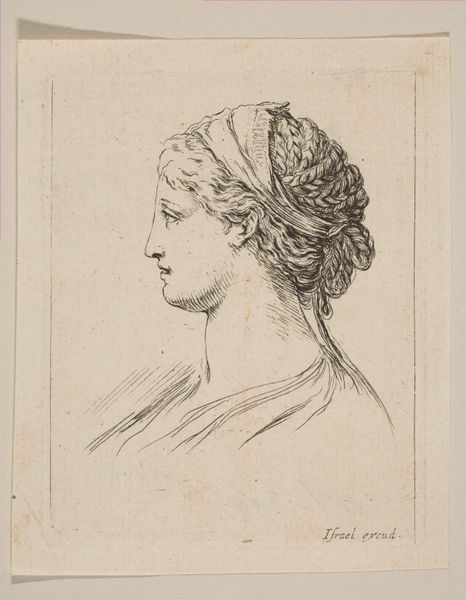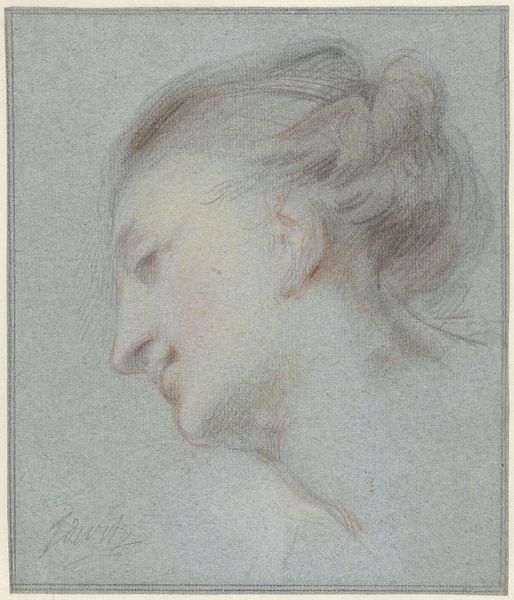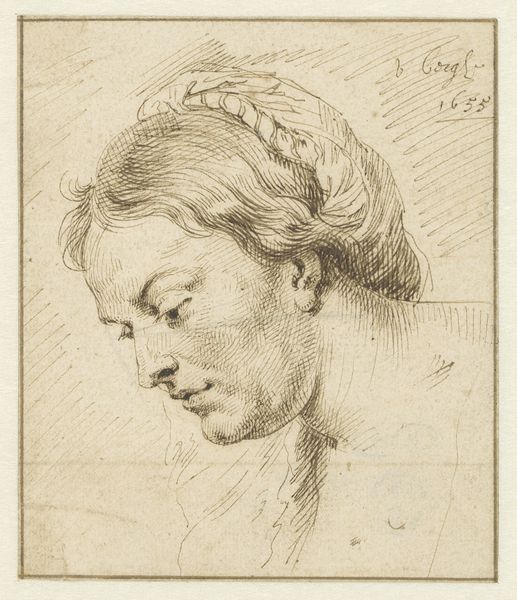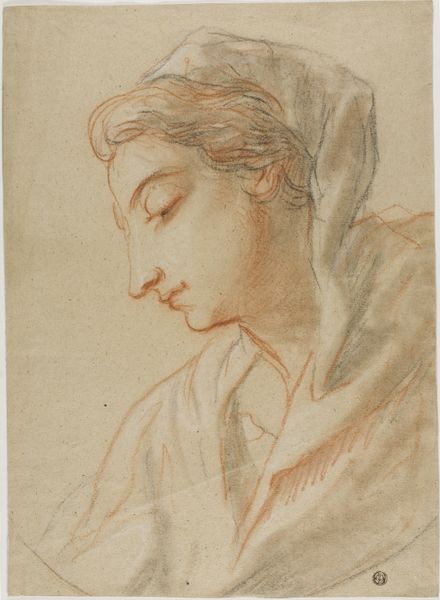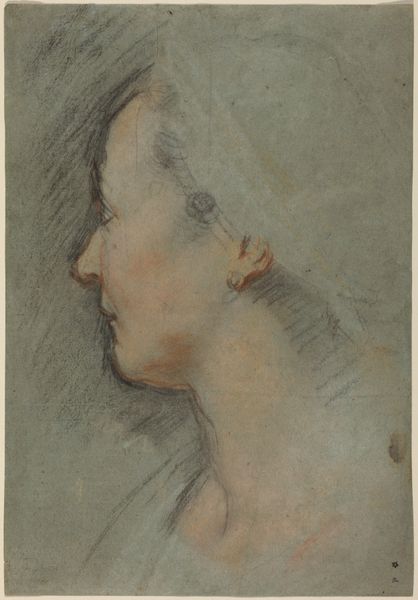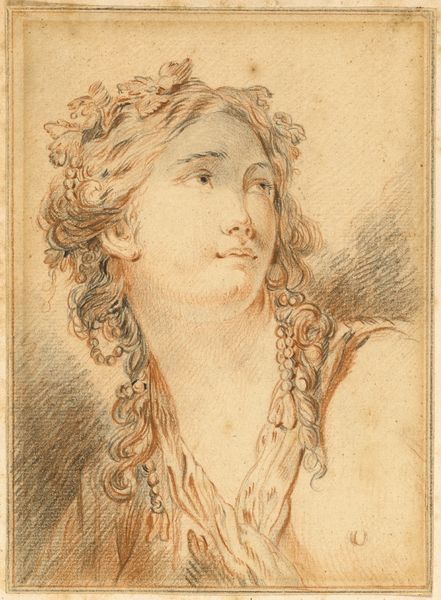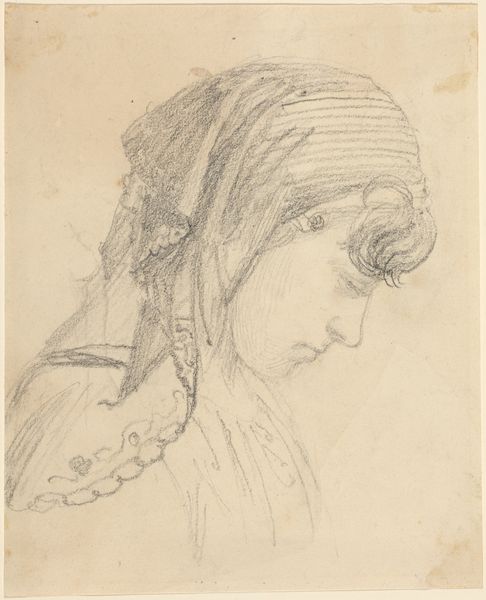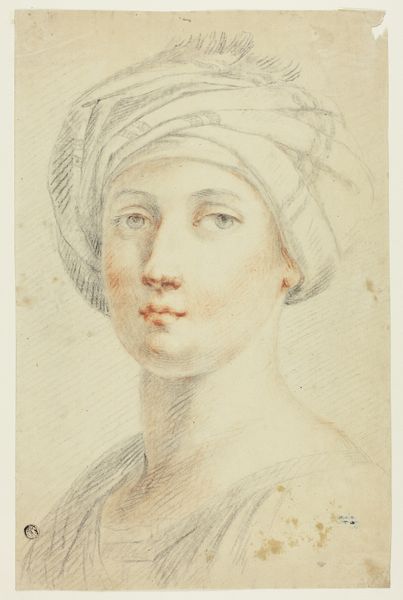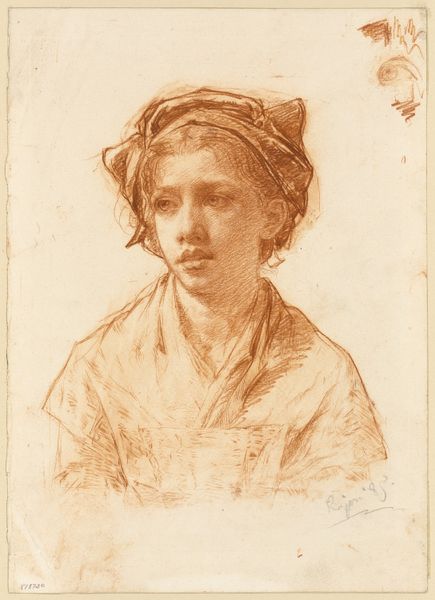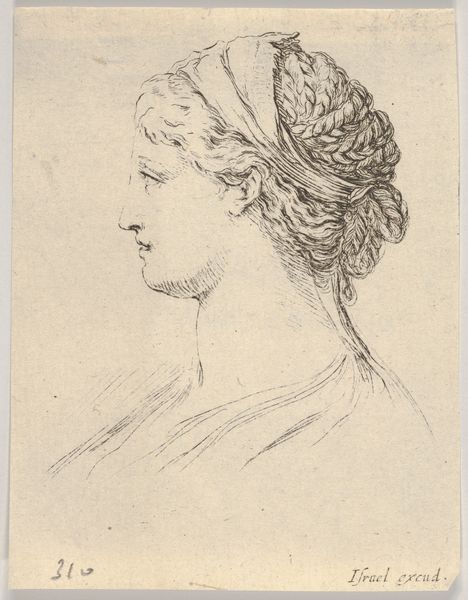
Hoved af en ung kvinde med hovedklæde i profil mod venstre 1612 - 1666
0:00
0:00
drawing, charcoal
#
portrait
#
drawing
#
baroque
#
charcoal drawing
#
figuration
#
portrait drawing
#
charcoal
Dimensions: 302 mm (height) x 254 mm (width) (bladmaal)
Editor: Here we have "Head of a Young Woman with a Headscarf, in Profile to the Left" by Pier Francesco Mola, made sometime between 1612 and 1666. It’s a charcoal drawing and the muted colors give it a quiet, almost contemplative mood. What do you see in this piece? Curator: I see a portrait, yes, but also a representation shaped by power dynamics. Consider the "exoticizing" trend prevalent in 17th-century European art. This headscarf, likely inspired by Ottoman or Middle Eastern styles, positions the subject within a visual vocabulary that associates her with the "Other." What narratives are subtly reinforced, and perhaps even exploited, through this artistic choice? Editor: So, it’s not just a stylistic choice; it’s connected to broader cultural attitudes? Curator: Exactly! It reflects and perpetuates the construction of the “Orient” as mysterious or alluring – seen through a European lens. Consider also the historical context: burgeoning trade routes, colonial expansion, and the West's increasing contact with other cultures, often filtered through prejudiced perspectives. How does this drawing participate in the aesthetic consumption of different cultures and identities? Editor: That’s a really interesting perspective! I was focused on the formal qualities, like the soft lines and use of light. I hadn’t considered its connection to colonialism and cultural appropriation. Curator: The artistic skill is undeniable. But we also need to question whose stories are being told, and *how*, especially when dealing with representations of individuals from different backgrounds or cultures. Who gets to control the narrative, and whose voices are marginalized in the process? Editor: This has given me a lot to think about, especially regarding the role of art in perpetuating, or even challenging, stereotypes. Curator: It's a complex issue, and hopefully this offers another avenue for understanding how art both reflects and shapes societal attitudes.
Comments
No comments
Be the first to comment and join the conversation on the ultimate creative platform.
